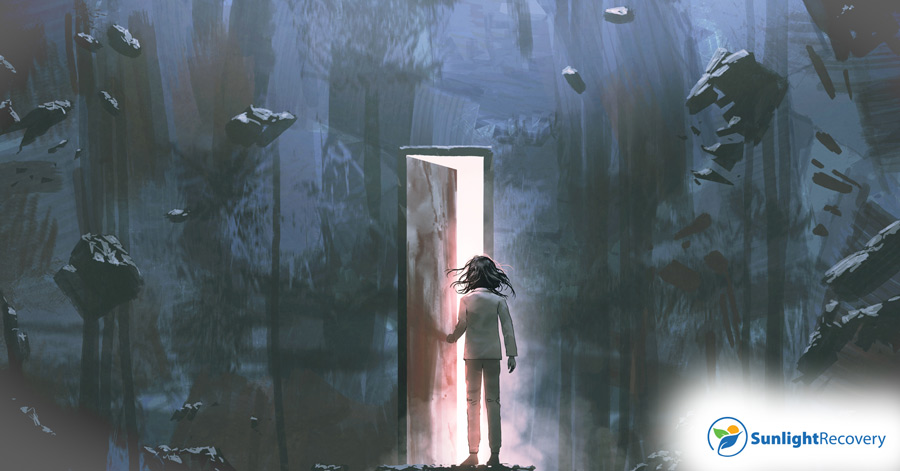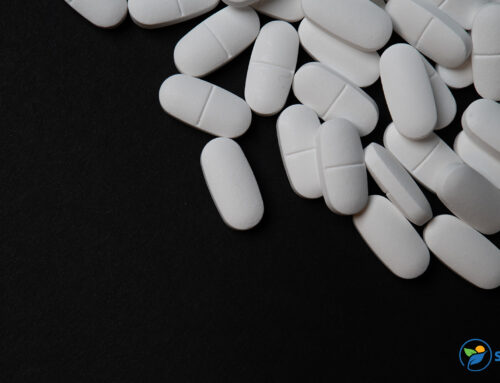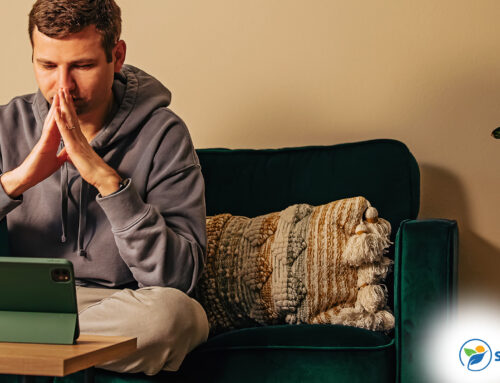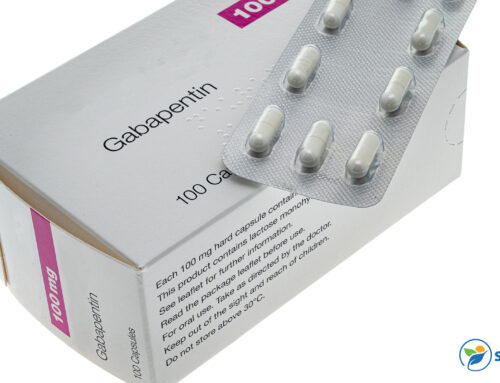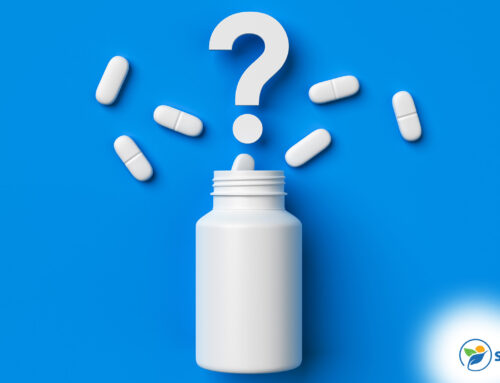A broad category of drugs used recreationally falls under the heading of hallucinogens. Most of these drugs can result in a pleasant experience of unusual perceptual and sensory experiences. Colloquially, taking hallucinogens is known as “tripping.” Taking these drugs regularly increases your risk of a bad trip.
What Is a Bad Trip?
A bad trip is an unpleasant experience while using hallucinogens, though some users even report bad trips when using marijuana, which is not typically categorized as a hallucinogen. During a bad trip, users may experience extreme psychological distress. Externally, a bad trip might look like someone destroying a room, crying for extended periods of time or seeming unresponsive to external stimuli.
Hallucinogens That Can Cause a Bad Trip
There are two basic categories of hallucinogens: classic and dissociative. Drugs in both categories can cause a bad trip at times. There’s no specific way to determine which way a trip will go, though there are risk factors that can make a trip more likely to go bad. If you want to avoid adverse reactions, you should avoid using:
- LSD: LSD, also known as acid, is a well-known and powerful hallucinogenic drug. Its psychedelic effects are often depicted in movies and media.
- DMT: Dimethyltryptamine, also known as psilocybin or magic mushrooms, is another powerful psychedelic. Many people report experiencing a bad trip while using mushrooms.
- MDMA: “Molly” or ecstasy is best known as a party drug. While bad trips are uncommon, they can occur on MDMA when paired with dehydration and too much partying.
- Salvia divanorum: Salvia, a plant commonly found throughout southern Mexico and in Central and South America, is a short-acting and potent psychedelic. Users often report feeling terrified when experiencing a bad trip on salvia due to the heightened experience.
- Peyote: A small, spineless cactus that contains mescaline, this drug is used in some indigenous practices in the United States. When brewed into a tea or other liquid, trips can last for 12 hours or more.
- Ketamine: Users may mention falling into a K-hole, which is a reference to a bad trip on ketamine and describes a near-complete disassociation from reality and a trance-like state.
- Marijuana: Paranoia and anxiety are often reported side effects of using weed, which can fall under the heading of a bad trip.
Studies are ongoing as to the efficacy of using psychedelics as part of a treatment plan for depression, anxiety and trauma. Talk to your mental health provider before you consider using any drug as a treatment option.
Signs and Symptoms of a Bad Trip
No two bad trips are the same, even when experienced by the same person taking the same drug. However, some of the most commonly reported bad trip symptoms include:
- Time dilation, or the sense that time isn’t passing
- Negative thought spirals
- Extreme paranoia and emotional distress
- Sudden mood swings with extreme responses
- Frightening or horrifying hallucinations and delusions
If you’re with someone who’s taken a hallucinogenic, keep any eye out for the signs of a bad trip. If the symptoms are prolonged or accompany dangerous behaviors, call 911 for help managing the symptoms.
Risks and Dangers Associated With Bad Trips
The risks and dangers you might experience with a bad trip can vary depending on the drug you take. Classic hallucinogens create visual and audio hallucinations and can make your feel sensations that aren’t real. The effects usually start as you metabolize the drug, which can be within 20 minutes. Some trips last as long as 12 hours or more, while others can be short, intense 15-minute trips.
When taking classic hallucinogens, you may feel your heart race, nausea and overloaded sensory responses. Colors may appear brighter, and you may lose track of time. Most people will experience a loss of appetite while on the drug, along with dry mouth and increases in blood pressure, breathing rate and temperature. During a good trip, you might have a spiritual experience and feel very relaxed. During a bad trip, excessive sweating, panic, paranoia and psychosis can be a problem.
Dissociative drugs can also cause numbness and disorientation, two relatively benign side effects when you’re in control that can be very dangerous during a bad trip. If you experience acute intoxication with a dissociative drug, you may also experience memory loss, panic, anxiety, seizures, psychotic symptoms, amnesia, breathing troubles and other side effects.
These short-term effects can be dangerous during a bad trip. If you’re experiencing mood swings, panic and numbness, you might not notice if you cause yourself an injury. Panic and paranoia combined could create a cocktail of bad decisions and no trust in the people around you to help.
Long-Term Effects of Bad Trips
Although rare, there are other risks associated with bad trips that could leave you with chronic health conditions, including:
- Persistent psychosis: A series of continuing mental problems that often include visual disturbances, disorganized thinking, paranoia and mood changes, even when not actively taking a hallucinogenic drug.
- Hallucinogen persisting perception disorder (HPPD): HPPD can create symptoms often associated with PTSD, where the person has flashbacks to things experienced while using a hallucinogen. You might experience visual or audio hallucinations or notice more general visual disturbances. Flashbacks can happen with little to no warning and persist for more than a year after the last time you tripped.
- Speech problems: Speech problems following hallucinogen use may involve slurred speech, slow speech, agitated speech and difficulty putting together sentences.
- Memory loss: Both short- and long-term memory loss may be side effects of a bad trip. You may forget what happened during the trip and have trouble with short-term memory for some time after using.
- Weight loss: Uncontrolled weight loss can be a long-term side effect of hallucinogen use. Drugs like LSD and mushrooms disrupt hunger cues, which may cause an unhealthy level of weight loss.
- Depression and suicidal thoughts: During and after a bad trip, there’s a risk of depression and suicidal thoughts. The anxiety caused by a bad trip can lead to negative thinking even after the drug passes through your system.
Some hallucinogens may also come with a risk of addiction; PCP is one example. Behavioral therapies and medication can be used to help people improve the symptoms of many of these side effects.
How to Prevent and Manage a Bad Trip
You can’t always prevent a bad trip. You can stay hydrated, only use hallucinogens in a low-stimulation space with company and avoid mixing drugs with any other substances, including alcohol. You should avoid hallucinogens if you’re not in a good mood as negative thoughts can spiral, causing a bad trip. But, even if you take all the appropriate precautions, you can still have a bad trip.
There are medications available that may help stymie a bad trip, but you’ll need to seek medical attention, as these medications are prescription-only.


